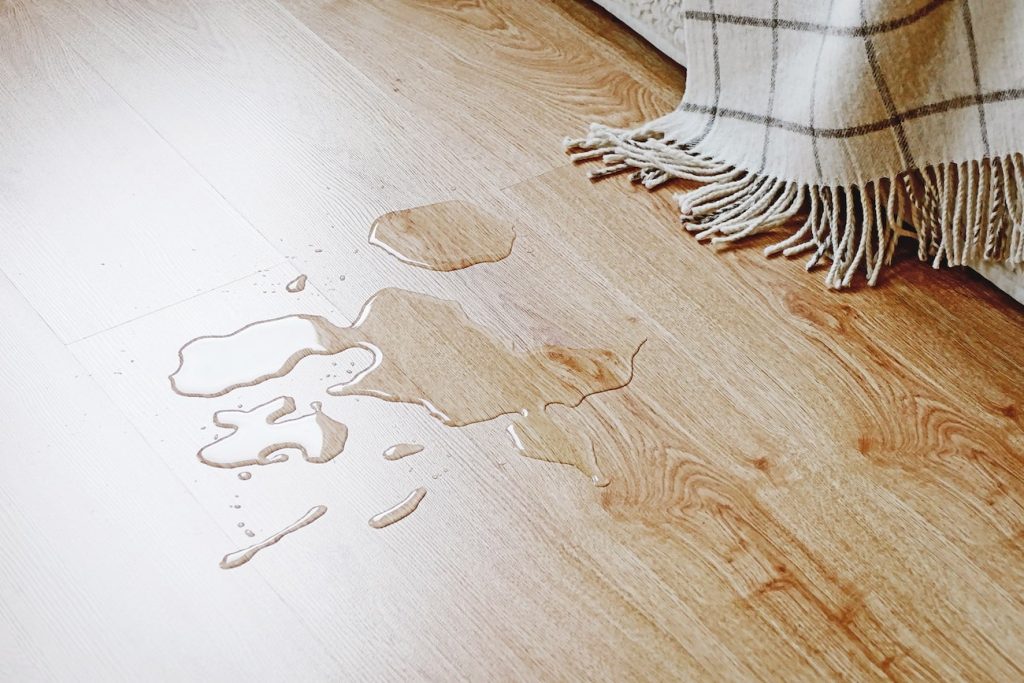Water damage can be tricky. Sometimes, it’s obvious that the damage is fresh, but other times, it’s not so clear. If you’re moving into a new home, scouting out a potential business location or even just trying to figure out if your bathroom needs a real repair or just a couple handy fixes, knowing whether your water damage is new or old can help you decide how urgent the repairs need to be.
As a team of emergency restoration specialists in Colorado, we’re glad to guide you through the basics of water damage age. Let’s explore how to determine this.
Identifying the causes of water damage
Water damage can happen for many reasons, from leaky pipes to heavy rainfall. Before you dive into figuring out whether the damage is recent, it’s important to understand what caused it. Common sources include roof leaks, plumbing issues, and overflowing appliances.
Some other less obvious sources of water damage can include:
- Burst pipes – Freezing temperatures or wear and tear can cause pipes to rupture.
- Clogged gutters – When gutters overflow, water can spill into your home.
- Foundation cracks – Water can enter through small cracks in the foundation.
- Condensation build-up – Poor ventilation in basements or attics can lead to moisture collecting over time.
- HVAC system leaks – Air conditioners or heating units can produce excess moisture if not properly maintained.
- Underground water table shifts – Rising groundwater can seep into foundations, especially in low-lying areas.
- Improperly sealed windows – Small gaps around windows can allow rainwater to slowly leak in.
What does water damage look like?
Water damage may present itself in various ways, depending on where it occurred and how long it’s been there. You might see stains on walls or ceilings, bubbling paint, or warped flooring. The key is to catch it before it worsens. But, how do you know if it’s recent or something that’s been lurking for a while?
How to tell if the water damage is new or old
So, you’ve found water damage—but is it new or old? Here are some tricks to help you figure it out.
Touch it first
This seems pretty straightforward- and it is! If the affected area feels wet to the touch, and the underlying surface like the walls or floor feel slightly soft, it’s likely new water damage.
Older water damage tends to dry out and feel firm, and often leaves rings of water stains as the water soaks, dries and repeats over time.
If the water damage is very, very old and you have sitting water somewhere, your walls or other materials may feel mushy and extra soft in the affected area.
Investigate your home’s history
Think back to any previous water issues. Have you had a flood or leak in this area before? Checking for a history of water problems can give you some context on the damage’s age. Look for issues like the home being on a floodplain, history of burst pipes, or other concerns.
Also, learn what your home is made out of. Is it made of primarily absorbent materials? Is there a lot of wood, drywall, etc? Or is there more brick, tile, and other hard substances? If you have more brick and tile, these materials take a long time to show water damage, so if you see the signs on these materials you likely have an issue.
Look for damage on durable materials
Materials like tile or hardwood don’t deteriorate quickly, so if you see damage on these surfaces, it’s likely to be older, constant damage. Water can penetrate slowly, making damage harder to detect until it’s severe.
Two great indicators of water damage on these types of materials are musty odors and mold growth. While mold can grow rather quickly in the right conditions, it’s less likely to form on surfaces like hard tile or brick unless there’s a water source.
Here’s how to identify water damage signs on a few common materials:
- For bricks, you should be looking for discoloration or warping of your brick walls. Brick is porous, so it may begin to bow or bulge with pressure if the water damage is affecting it over time. If your brick is painted, you’ll want to look for paint bubbling or peeling.
- For hardwood, you’ll also often see discoloration and warping, especially on floors. You may see some “cupping”, where the floor bows down in the spot where water pools. You may see swollen or loose boards, and nails may be lifted where the wood has soaked and dried again.
- For tiles, you may notice the same signs as the other materials: discoloration or mold are common. However, you may also be able to hear a “hollow” sound from your tiles when you walk over them or tap a coin on them, since water damage may separate your tiles from the surface underneath them. You’ll also often see damaged caulk or grout for water-damaged tiles.
Inspect for mold damage
Mold grows fast in damp areas, but not immediately: it usually takes about 24-48 hours to develop. If you notice mold but the spot feels dry, the water damage is likely old. However, if both mold and moisture are present, it’s more recent.
Look for material decay
Check for signs of decay, like rotting wood or crumbling drywall. If these materials are breaking down, it’s a good indicator that the water has been sitting for a while.
What to do when the water damage is new
If you’ve determined that the water damage is fresh, don’t wait. Immediate action can prevent further harm to your home and belongings. Start by drying out the area and removing any standing water. Fans and dehumidifiers can help speed up the drying process.
Next, you’re going to want to call professional water damage specialists. Water damage restoration services are often offered 24/7 in order to quickly mitigate possible damages and identify sources of water in your space. You also may want to look into mold remediation services if you’ve noted possible mold on your surfaces.
Call an emergency water damage restoration team today
When in doubt, it’s always best to call in the professionals. A water damage restoration team can assess the situation, mitigate the damage, and restore your home to its original condition.
If you’re in Colorado and in need of emergency water restoration, check out our service area and see if Mile High Environmental Services is the right fit for your needs! We handle residential, commercial and municipal needs. Don’t let water damage linger— contact us today!
Our emergency water response team offers 24/7 coverage to help you mitigate new water damage right away, or schedule at your leisure to handle old damage.


